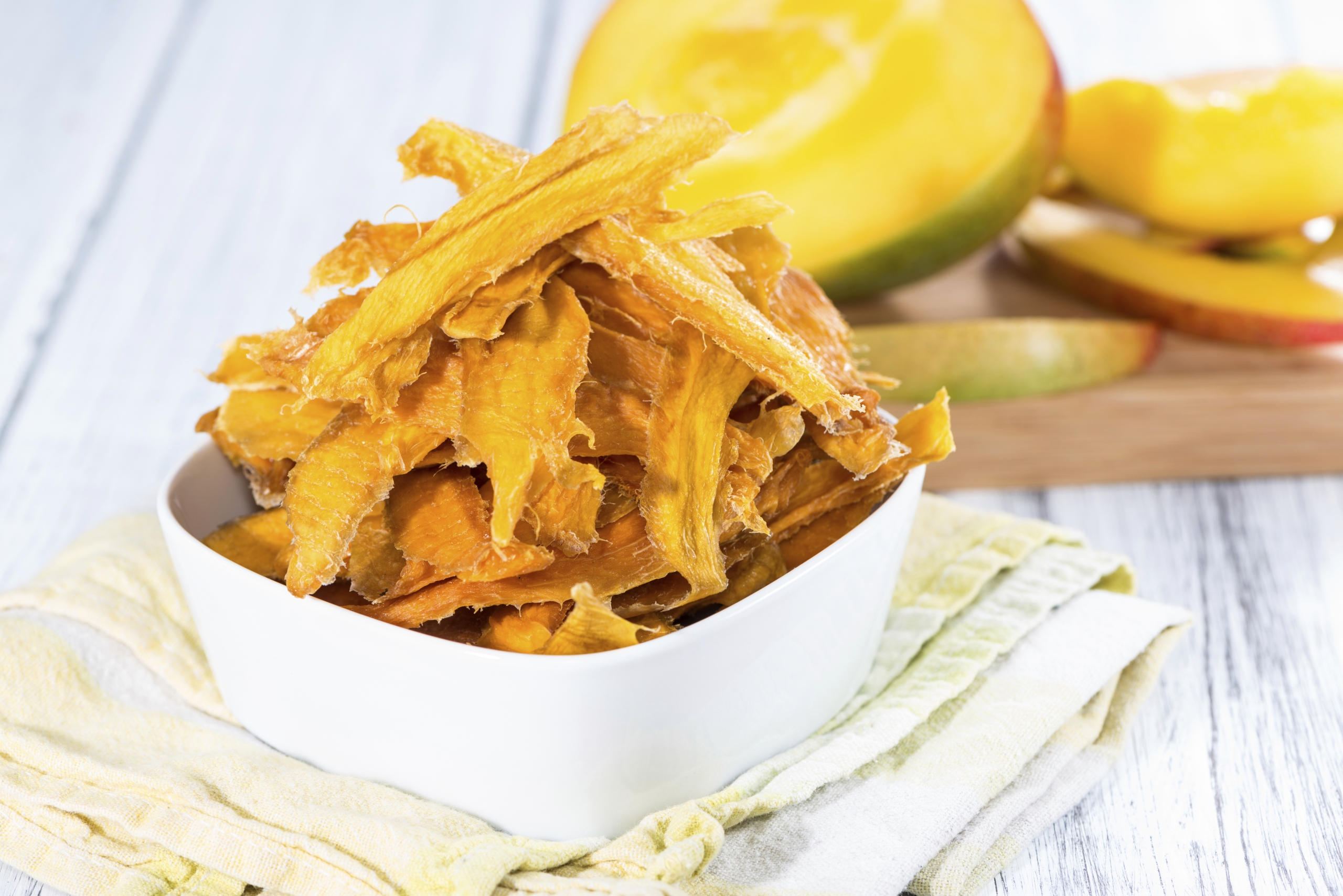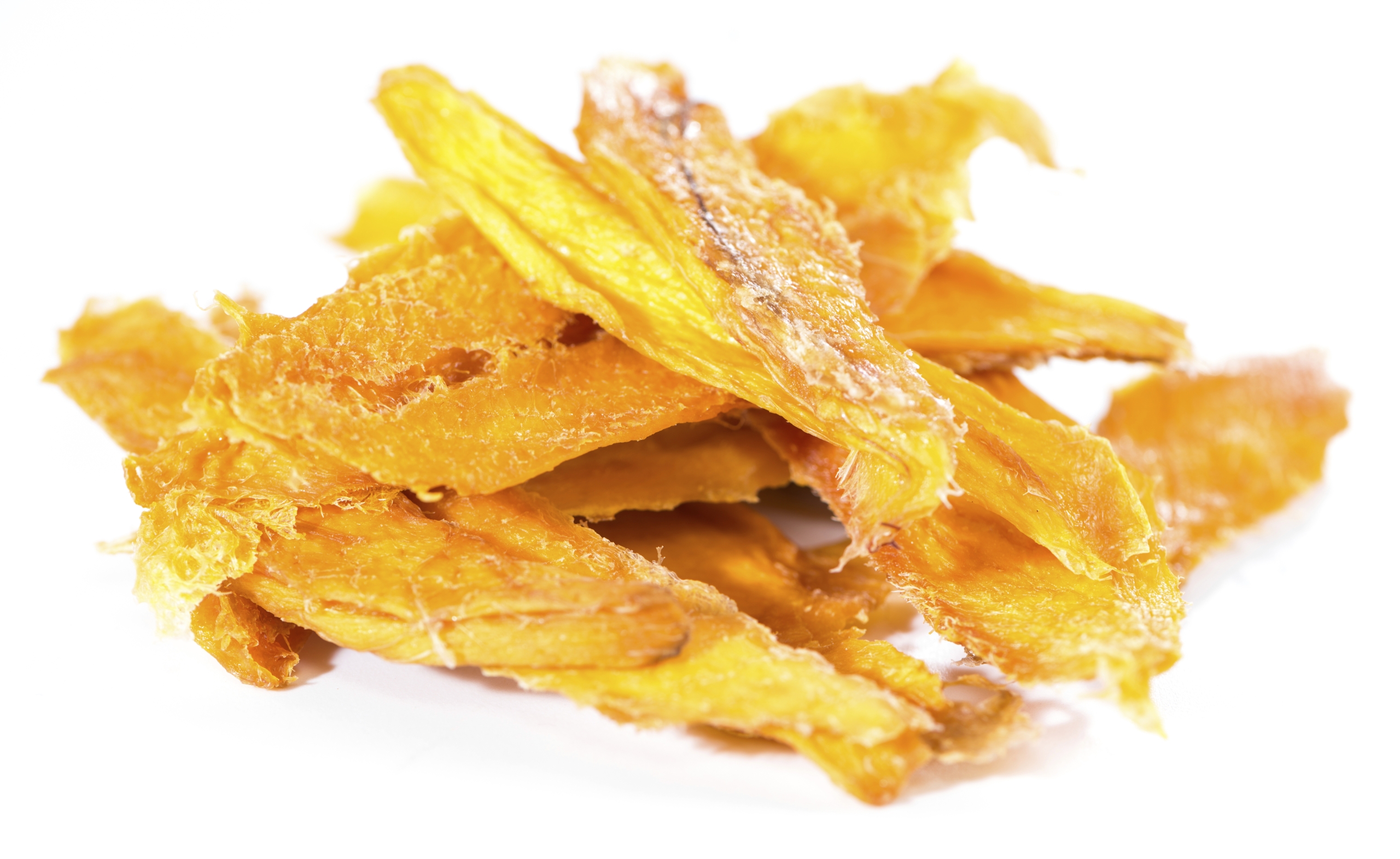Making Mango “Candy” – How to Make Dried Mango Slices or Mango Leather

For years, mangos have been of great value in South Florida, grown with pride in the garden—a fruit to eat when ripe and at all stages of growth. Enjoying truly fresh mangos is a Floridian’s privilege, but there are also many ways to preserve the fruit. Since this is a wonderful year for mangos, it is an opportunity to preserve some of the harvest. One of my favorite ways is by making mango candy.
Dried fruit has a long tradition, dating back to 4,000 years ago in Mesopotamia, and is prized because of its sweet taste, nutritive value and long shelf life. Drying is an excellent way to preserve mango fruit. In the form of dried slices or fruit leather, the mango makes a delicious, sweet, all-natural, healthy candy containing fiber, vitamins and minerals. Most people like it, and kids just love it!
Drying does not change the flavor of the natural fruit, and in many fruit the color retention is excellent. They can be stored in a small space, and be beautiful gifts.
Dried Mango Recipe
Ingredients: Mangos
Equipment needed: Electric dehydrator
The climate in South Florida is too rainy and humid during the mango season for sun-drying of fruit to be practical. Electric dehydrators are the most convenient method for drying mangos here. Several good dehydrators are available. Elsewhere, in regions where there is little rain and low atmospheric humidity, the fruit can be dried in the sun.
For drying slices, select ripe, firm mangos. Avoid fruits that are too soft and mushy, as they are difficult to slice and will result in slices that are dark in color.
Instructions
- Peel the fruit with a sharp knife and cut out any defective parts. Cut off the two sides, or “cheeks,” of the pulp, and then cut off the two remaining narrow pieces from the edges of the seed. Discard the peels and seeds for compost.
- Cut the pieces of pulp into lengthwise slices 1⁄4 inch to 1⁄2 inch thick.
- Arrange the slices flat on the dehydrating trays. Place the trays into the dehydrator.
- Set the temperature between 125°F and 135° F, and let the dehydrator run until the slices reach the desired consistency. Slices that are too soft or moist do not store well. Drying time depends upon the thickness of the slices, the amount of fruit in the dehydrator and the humidity. In South Florida, drying times of eight to 10 hours are typical. However, check a few hours earlier to avoid burning the fruit. Properly dried slices have a beautiful golden-yellow color.
When & Where to Buy Mangos in Florida

Dried mango slices or leather should be placed in closed bags soon after drying. If they are left in a humid atmosphere without protection, they will take up moisture and soften considerably. The bags of dried slices or leather should not be stored at room temperature for more than a few days in hot weather, as they will ferment or develop mold on their surface and become inedible.
Dried mango products can be kept in a refrigerator successfully for at least two years or in a freezer for at least three years.
This article was written by Noris Ledesma and originally published in the Summer 2015 issue of the Tropical Garden. Noris Ledesma is Curator of Tropical Fruit at Fairchild Tropical Botanic Garden. Minor changes from the print version of this article were introduced to improve readability in a digital format.
